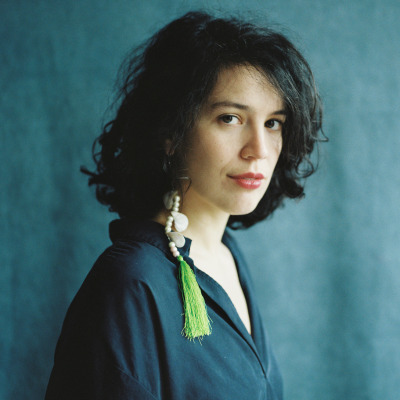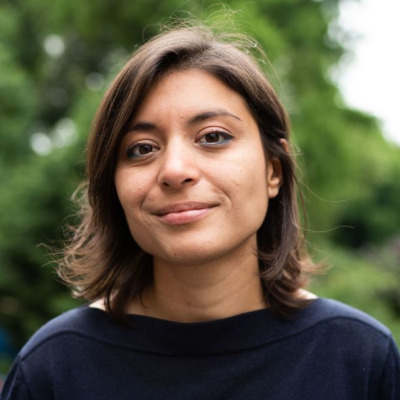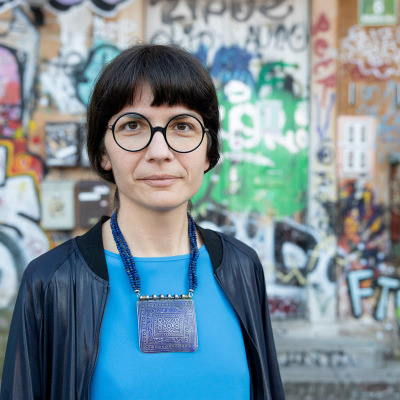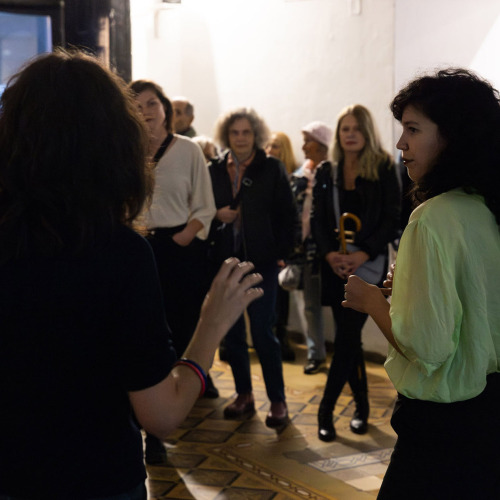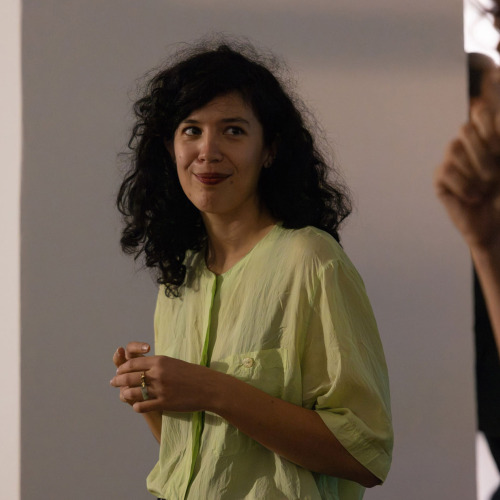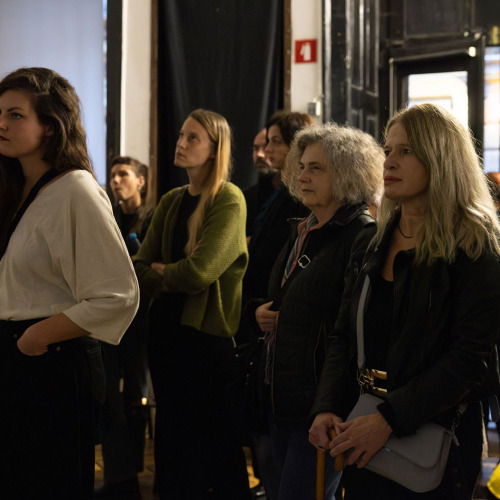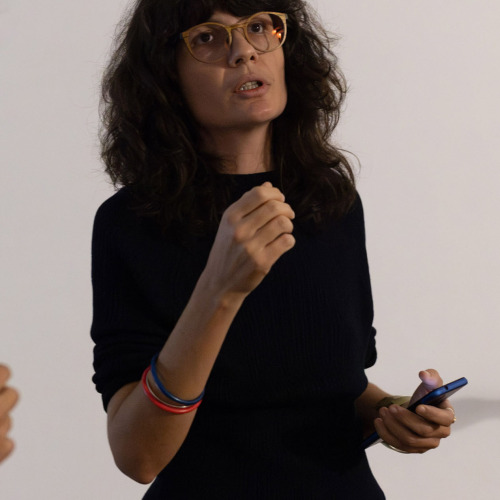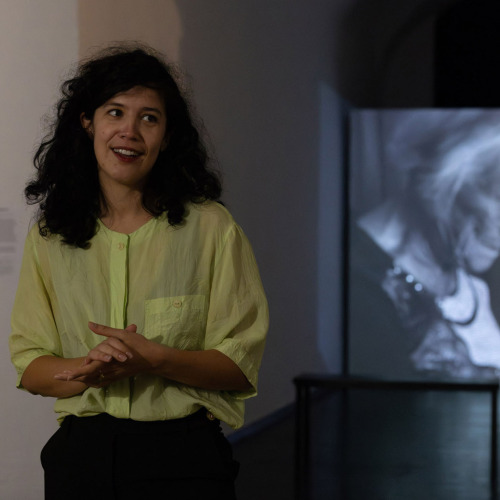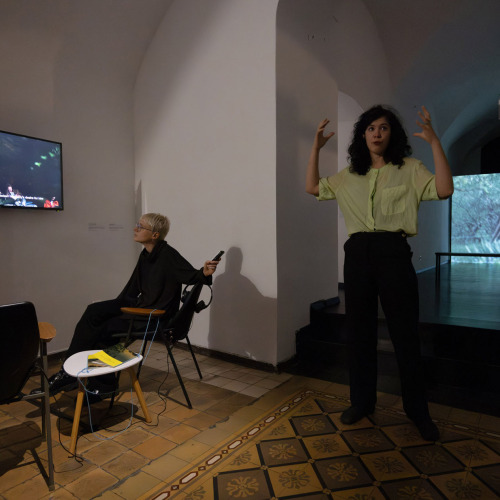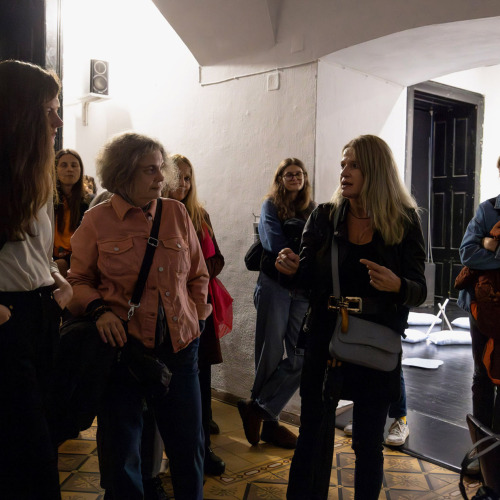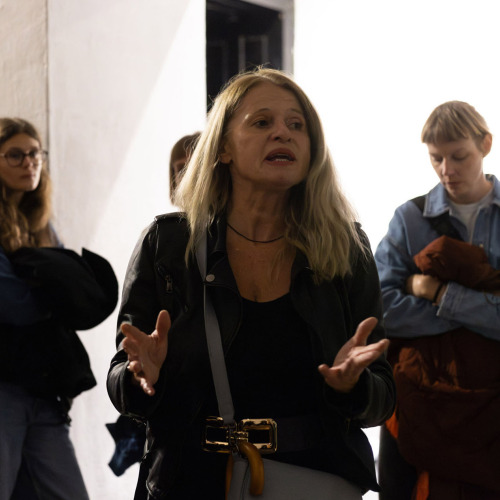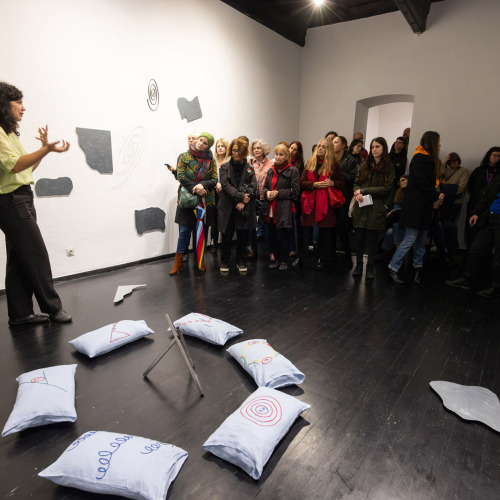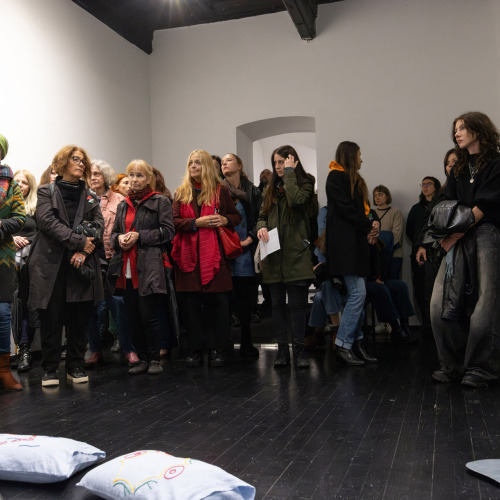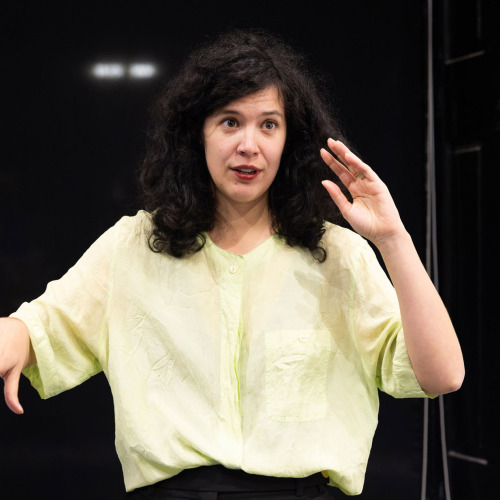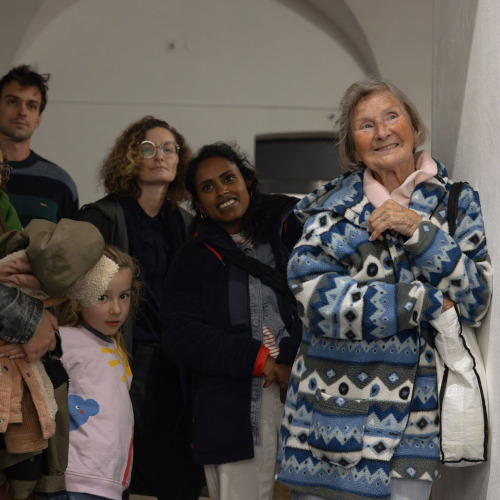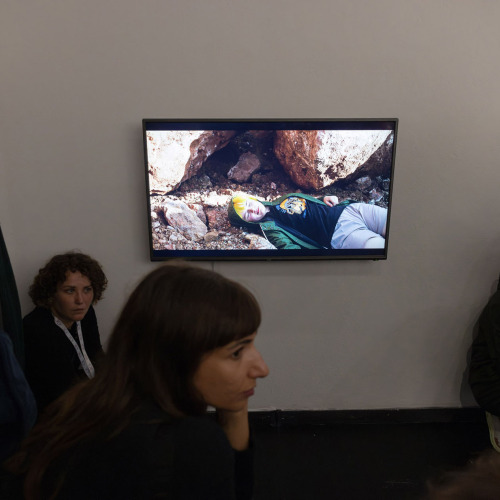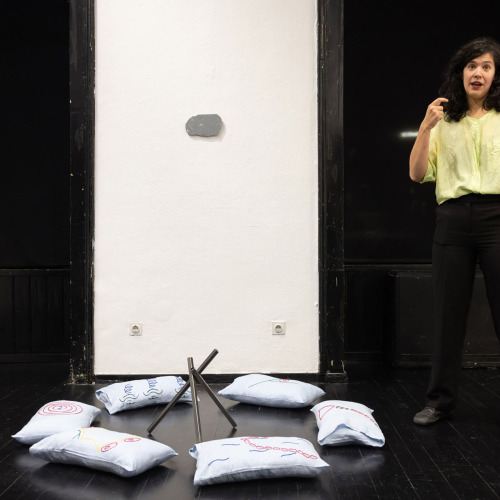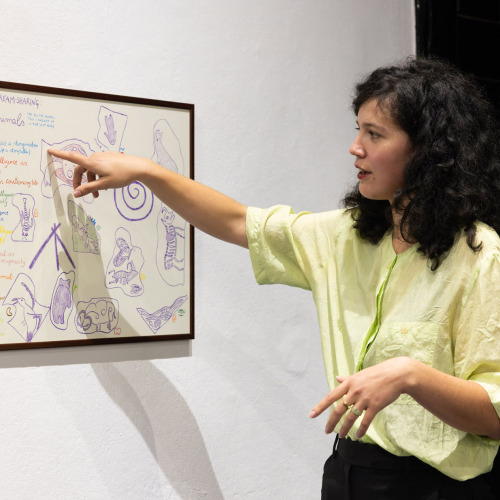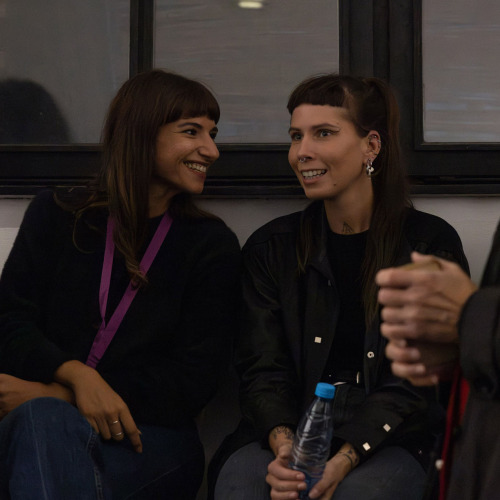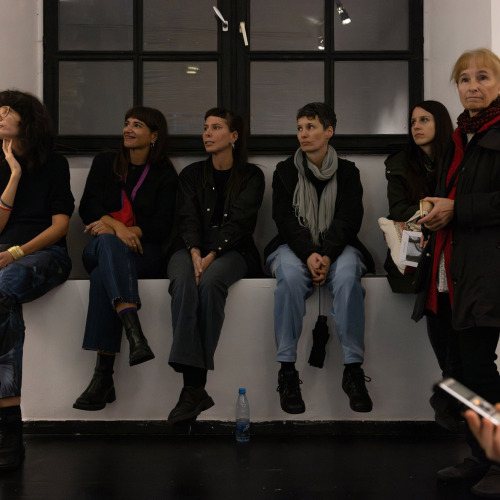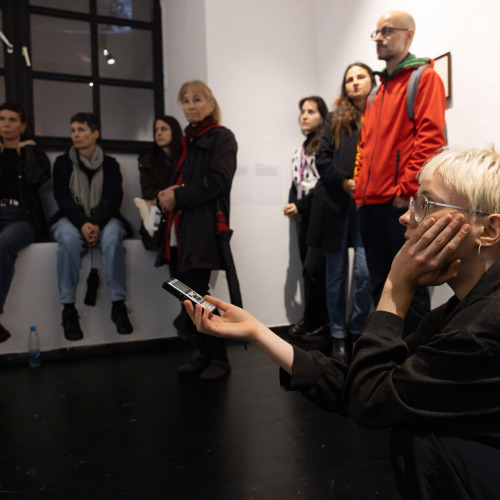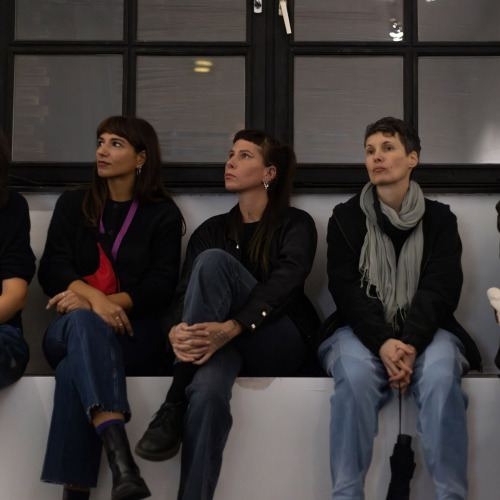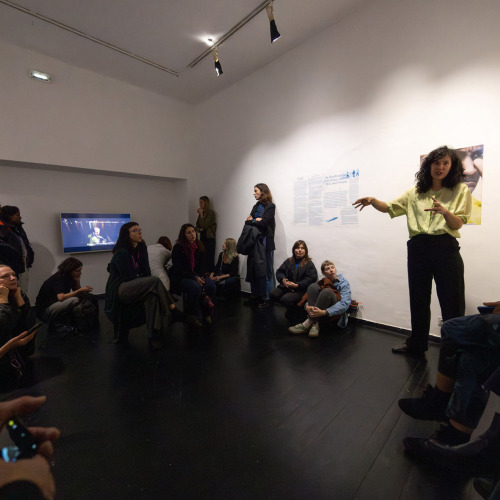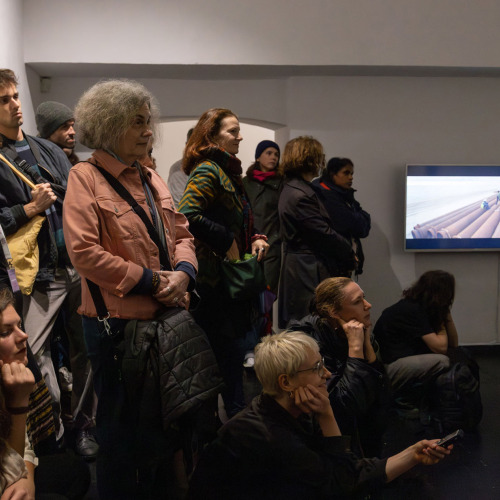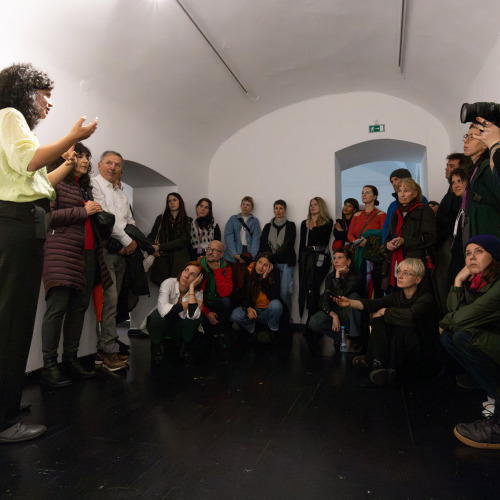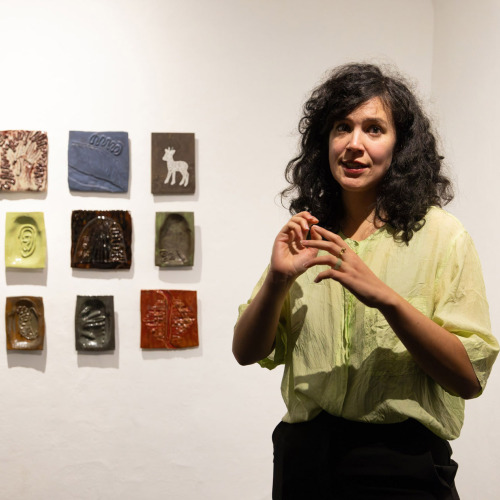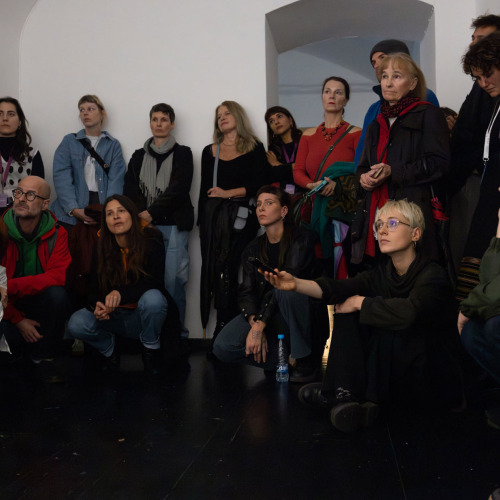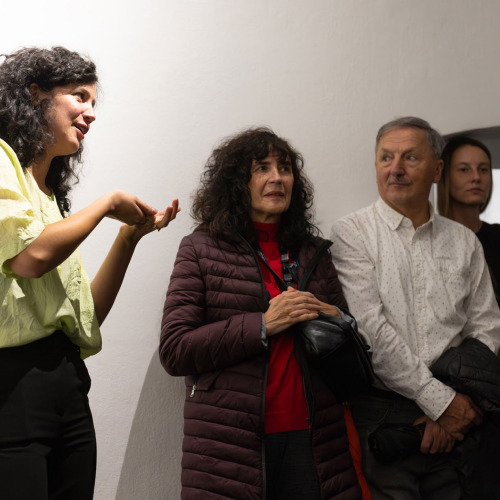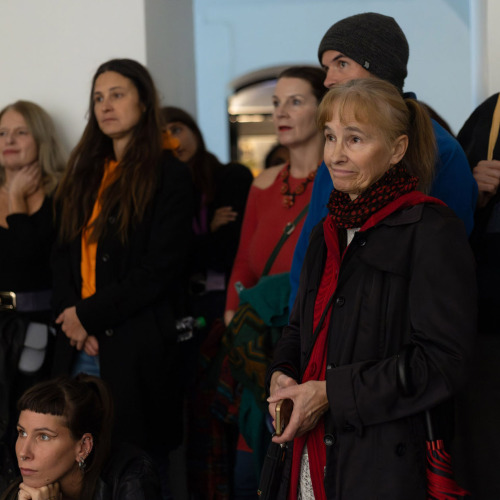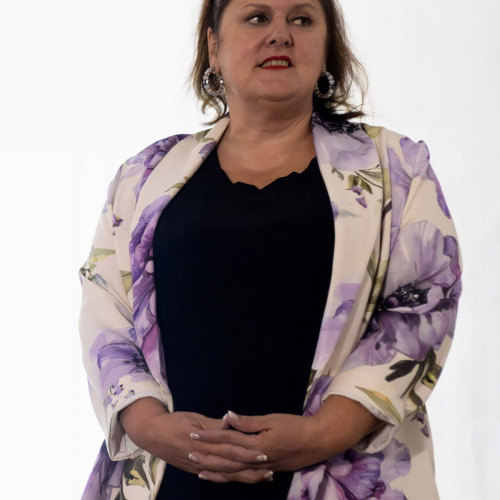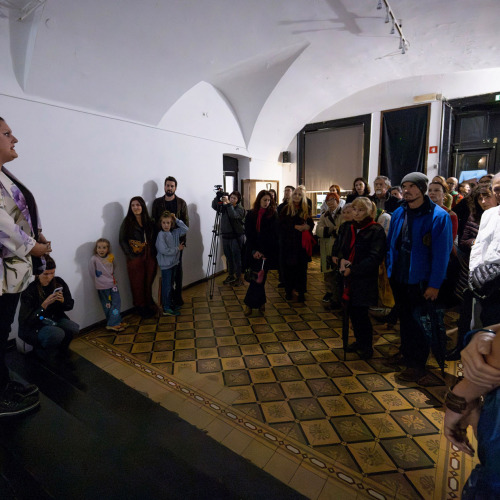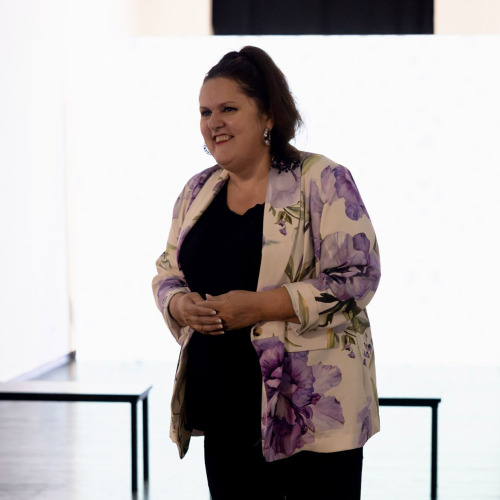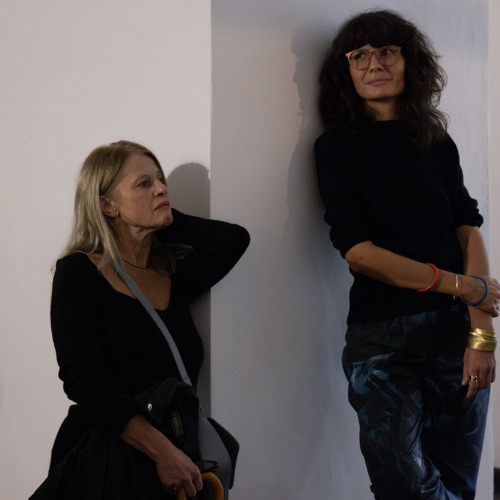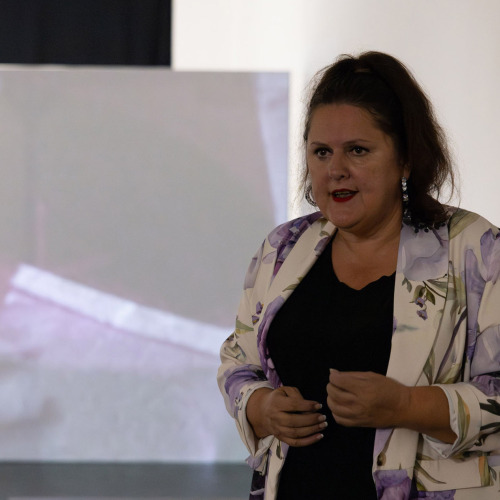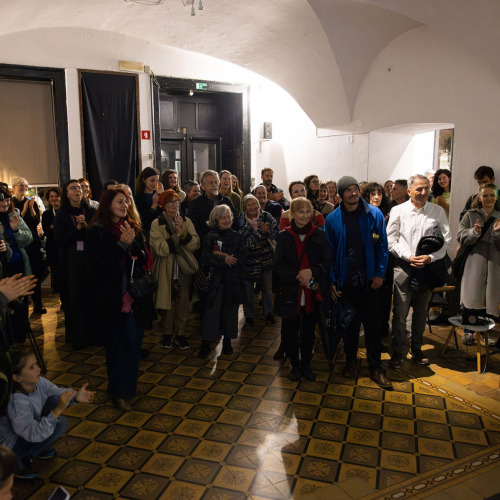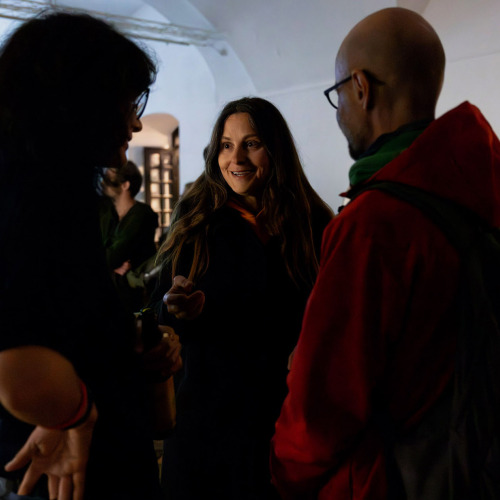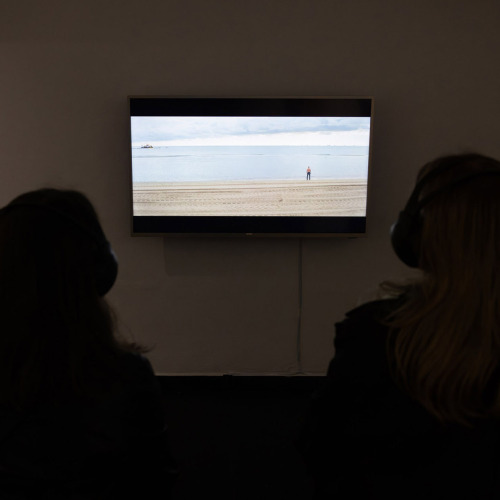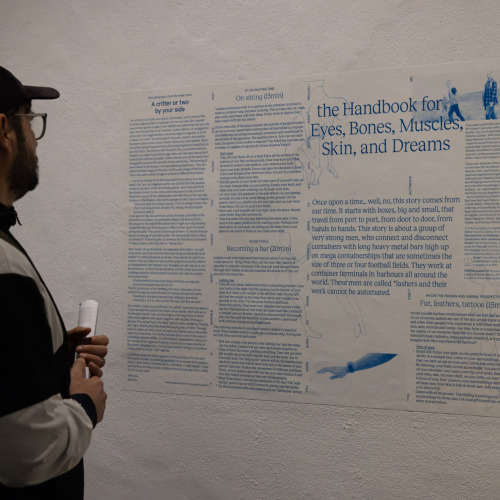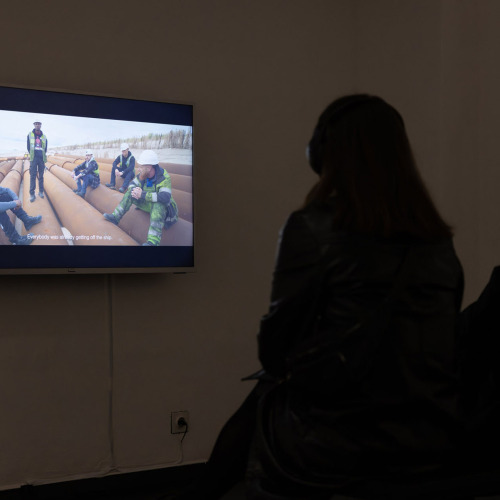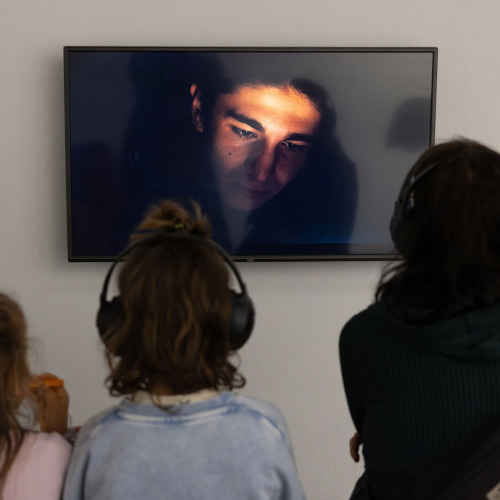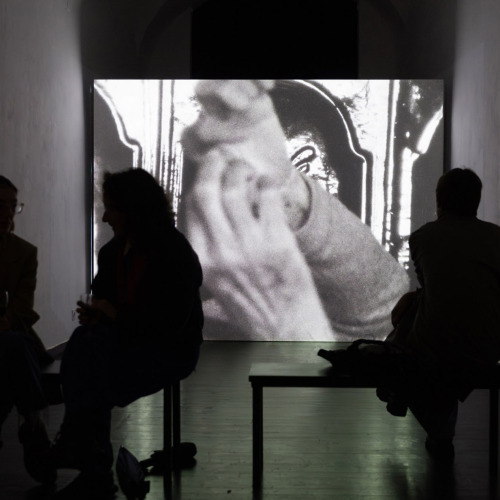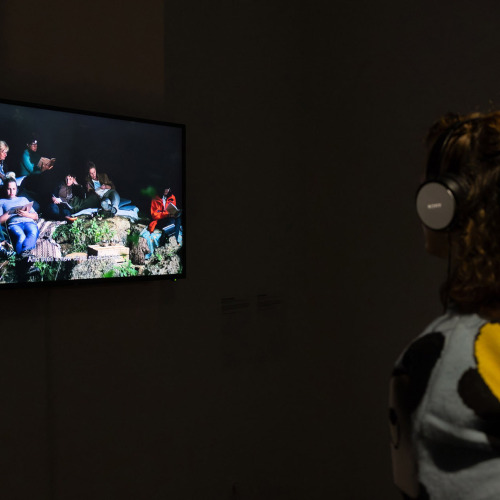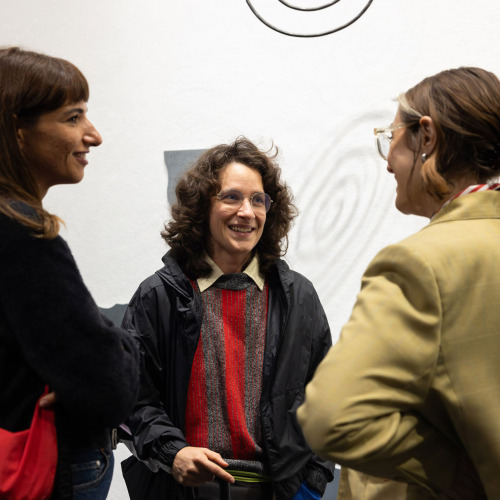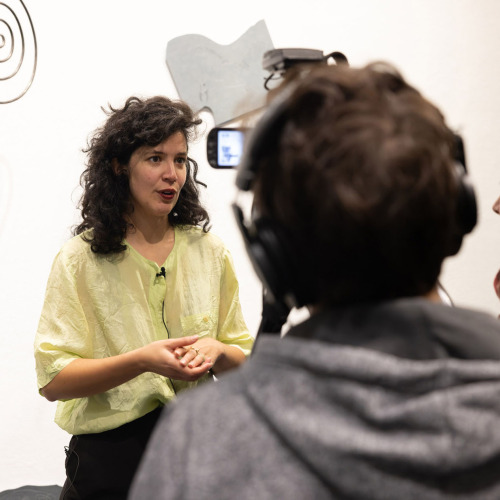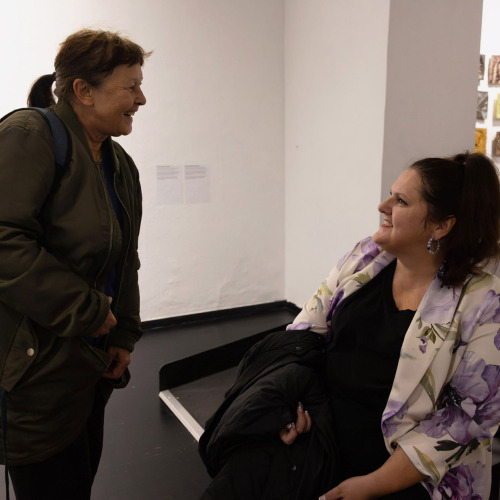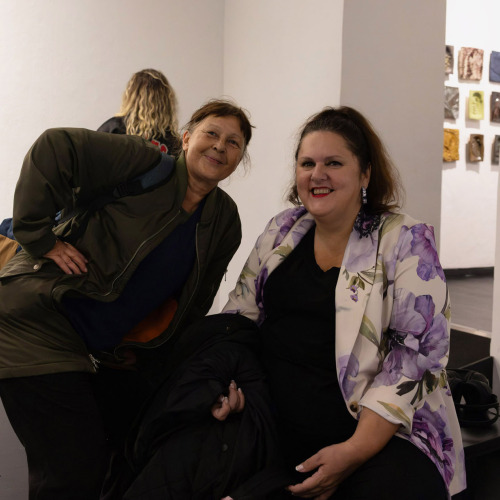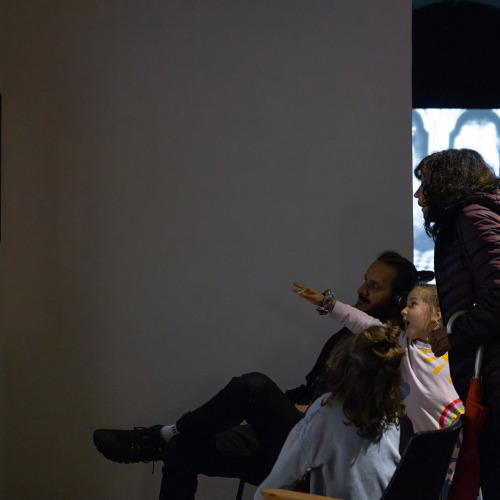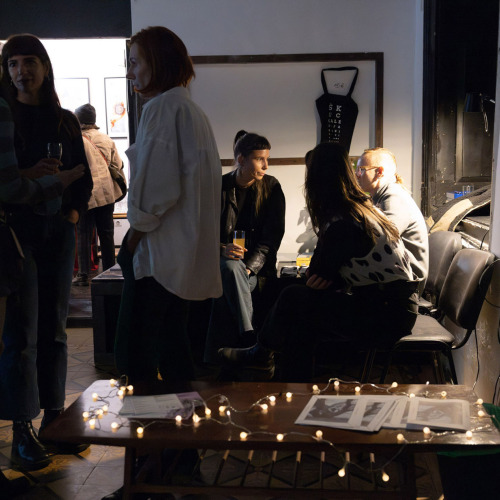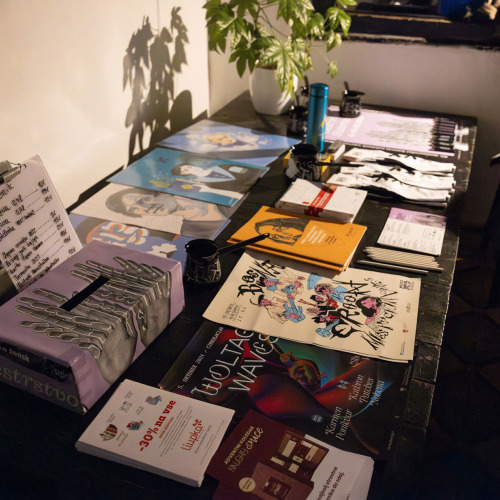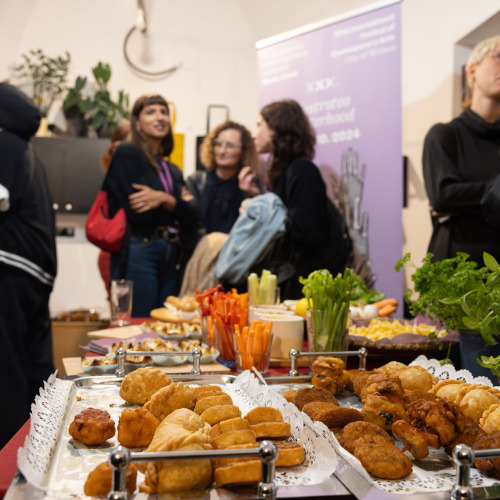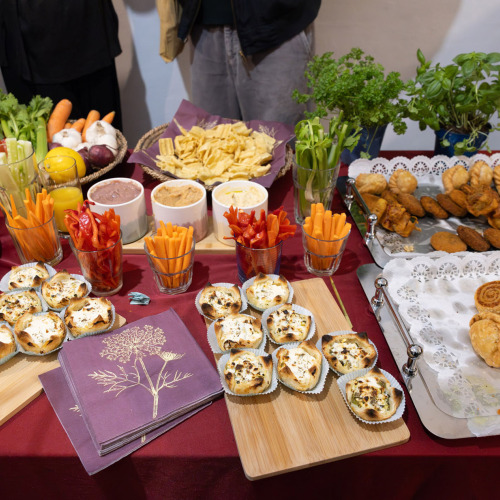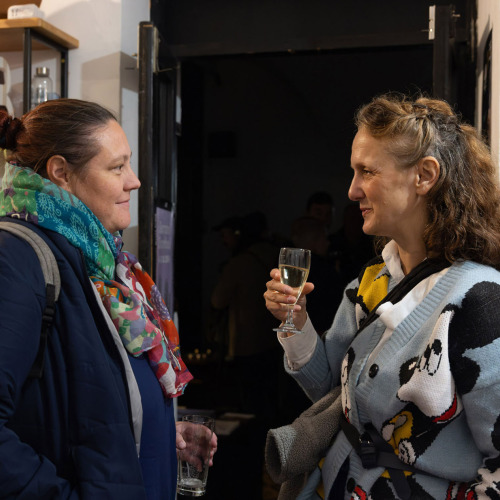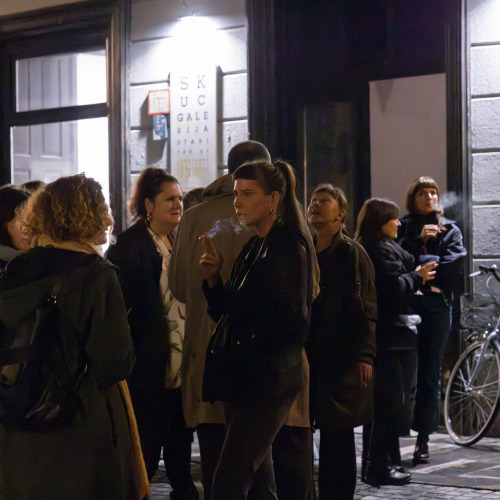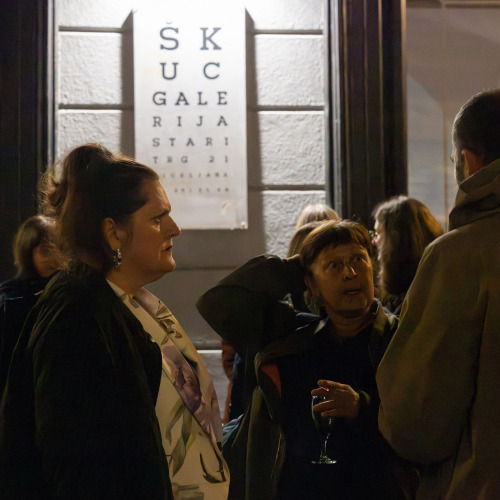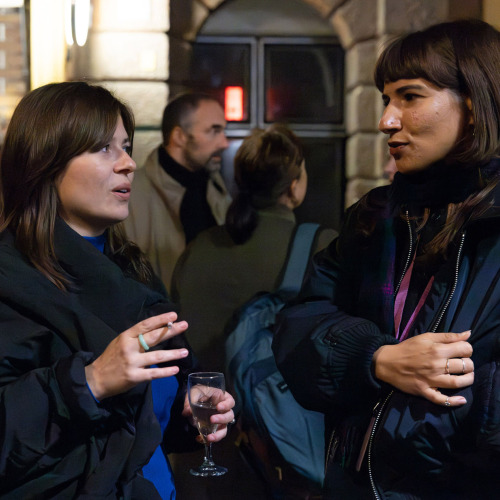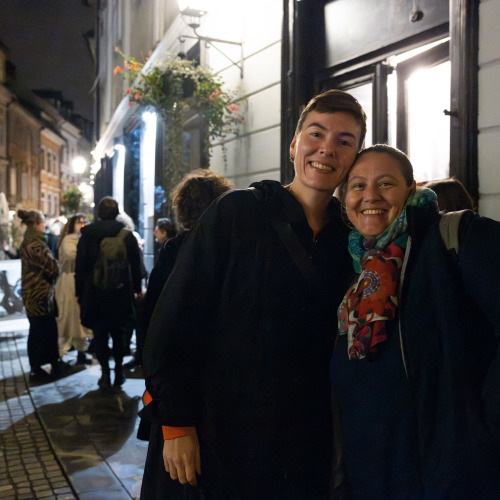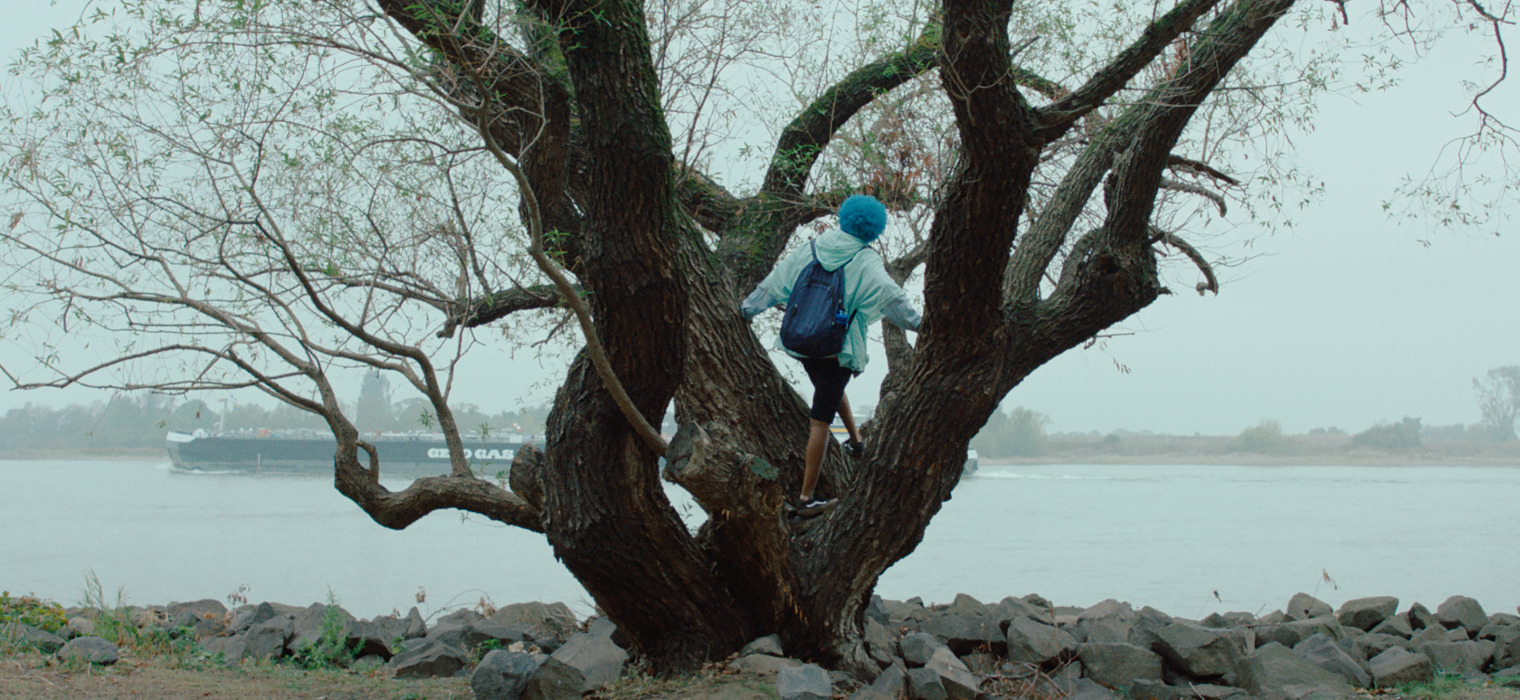
We Dream Together by Katarina Jazbec
23.10., 17.00 Guided tour with curator in Slovene
24.10., 16.00 Guided tour with curator in English
We Dream Together
Katarina Jazbec’s Invitation to Rethink Sisterhood and Kinship through Collaborative Filmmaking
It is commonplace to many festival, gallery, and museum visitors that the moving image has become one of the dominant media within the visual arts context. It can be an end product of diverse processes. In her solo exhibition titled We Dream Together, young Slovene artist and filmmaker Katarina Jazbec reveals the methods and the intricate protocols developed to engage the protagonists of her films (in dialogue) in front of the camera. Departing from her four recent works, Our Bearings, By the Clay Oven We Bobbin-Lace Together, You Can’t Automate Me, and Know Your Stones, the exhibition We Dream Together expands even further with spatial installations confronting the visitor. In three of the works exhibited the visitor is invited to experiment with parts of the process experienced by the protagonists in the films. Rather than immersing one in the illusion, the installation encourages the visitor to create a parallel (undocumented) film that unravels in the galley setting.
Katarina Jazbec approaches the protagonists of her films in various ways. It can be a simple invitation to read together, share thoughts and experiences, or cohabit in space/time. She uses these methods when engaging with people in her ancestral surroundings, like her family members and women around her hometown.
In the first work we encounter, upon entering the exhibition space, the projected film By the Clay Oven We Bobbin-Lace Together, where the artist portrays several older women from the Cerkno Idrija hills and the inner and outdoor settings they inhabit. The film shot with the 16mm camera recalls an anthropological document of a time passed. The women perform for the camera. Their gestures have been learned and repeated since early childhood. The bobbin lace is an artisan outcome of a laborious process registered in the contemporary economy in terms of national heritage and heritage tourism. To the artist, these recordings do not merely evoke a personal recollection of her great-grandmother and the social context created through the communal practice of lace-making, but they also allow for a glimpse into the latent local animistic imaginaries. The film extends in an installation. 11 ceramic tiles, similar to those built into clay ovens, show drawings and lace depicting the disjointed body parts, natural landscape and more-than-human inhabitants of the mountaineer region, the images on the tiles probably stemming from the stories shared by the lace makers. Katarina Jazbec is not submitting heritage to national myth-making and its economisation. She refers to heritage through another episteme, which doesn’t privilege the human-centered image of the world.
Our Bearings, an earlier video work made in 2016, exhibited in some sense as a footnote to By the Clay Oven We Bobbin-Lace Together (the most recent work in the exhibition), helps us navigate the meanings of the former. In Our Bearings, the protagonists — Katarina Jazbec’s family members and the artist herself — discuss a book they have read together. The video is a glimpse into the relationship between the extended family members during transformative times after a loved one has passed — the great-grandmother who was a bobbin-lace maker (and is in a sense incarnated in many a woman depicted in By the Clay Oven). The grieving family members read and discuss a short story, The Woman with the Wolf, by Mojca Kumerdej, where a mother, after the death of her infant, adopts a wolf cub. Making kin that surpasses familial ties and species boundaries becomes grounds for familial debate. While the details of the conversations remain undisclosed, we only get a glimpse into the different perspectives among women of the same family. In Our Bearings, the radicality of the proposal to bypass familial lines by multispecies affinities is a bold proposal that exceeds renegotiation of relations within the extended family, thus adding to bell hooks’ version of sisterhood by expanding solidarity to a more-than-human world.[1] The video is accompanied by the printed short story The Women with the Wolf by Mojca Kumeredaj which you are invited to read in the gallery or within your setting of choice.
The next two works in the exhibition take us to spaces Katarina Jazbec encountered later in life, the (post)industrial port landscapes of Rotterdam, and the mines and the foundries of the Ruhr region, far away from the natural surroundings of her childhood. To engage the protagonists in these two films, the artist employs more devised methods, shared with the exhibition visitors as spatial installations that expand beyond the film format. Katarina Jazbec invites both the protagonists of the films and the gallery audience to use their imagination and body in a different manner.
You Can’t Automate Me portrays the gendered labour force in international port cities. The cis-men depicted in the film are so-called lashers, some of the last non-automated laborers in the otherwise fully automated harbour. Together with Angeliki Diakrous, Katarina Jazbec prepared a series of scores — instructions for exercises intended to make one pay attention to the bodily movements the men perform in their daily routine. In a sense, by opposing Rudolf Laban’s corrective exercises for industrial workers, the duo creates scores emphasizing that the human (and more-than-human) body can do much more than diligently perform a set of instructions. The exercises written on the galley walls invite the visitors to put themselves in the shoes of the lashers, who have engaged in the choreographed movement in front of the camera. The human protagonists and the computer-generated images of stowaway animals are the beacons of environmental hope in the post-apocalyptic scenography of the Europe’s largest port. Observing (without intervening in) the binary gendered (work) spaces, Jazbec takes us from the (still not automated) so-called low-skilled labour to the postwork imaginaries of the climate crisis.[2] Know Your Stones is a film shot in the devastated (post)industrial landscape around the Ruhr that bears witness to the expansion of industry in Europe as well as its demise and transfer to other parts of the world. Reflecting on deep time, ecological crisis, and the social impact of both industry and its demise, the protagonists (a geologist, steel plant workers, and young environmentalists) employ different stones to engage in the dream-sharing experiment that dwells on their connection to human and more-than-human worlds. The exhibition visitor is invited to introspect about and engage with their own dreams while encountering drawings documenting the artist’s dreams of animals on different materials extended in the gallery space.
Katarina Jazbec captures the landscapes and the people, weaving a rich tapestry of connections and shared experiences. The exhibition reveals a sense of sisterhood as making kin that is carried beyond the familial and the gendered meaning of the word to, as Donna Haraway proposes in Staying with the Trouble, cultivating multispecies justice.
Iva Kovač
In her solo exhibition titled We Dream Together, young Slovene artist and filmmaker Katarina Jazbec reveals the intricate protocols employed to engage the protagonists of her films (in dialogue) in front of the camera. Departing from her four recent films, Our Bearings, By the Clay Oven We Bobbin-Lace Together, You Cannot Automate Me, and Know Your Stones, the artist creates spatial installations that reveal the steps that led up to the creation of the films inviting us to immerse ourselves in the processes while learning about the thematic focuses — We (are invited to) Dream Together with various communities. From the immediate surroundings of her family and women around her hometown, the gendered labour in international port cities and post-industrial towns, to different protagonists fighting for climate justice, the artist captures the landscapes and the people, weaving a rich tapestry of connections and shared experiences. The exhibition reveals a sense of sisterhood as making kin that is carried beyond the familial and gendered meaning of the word to, as Donna Haraway proposes in Staying with the Trouble, cultivating multispecies justice.
The exhibition was curated by Iva Kovač.
The exhibition will be open to the public till 31 October, from Tuesday to Sunday between 12.00 and 19.00.
12.10., 17.00 Guided tour with curator in English
13.10., 16.00 Guided tour with curator in Slovene
We also organize tours for school and extracurricular groups. Write to us at sara.sabec@cityofwomen.org
